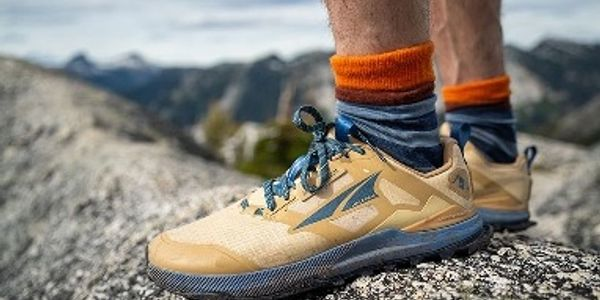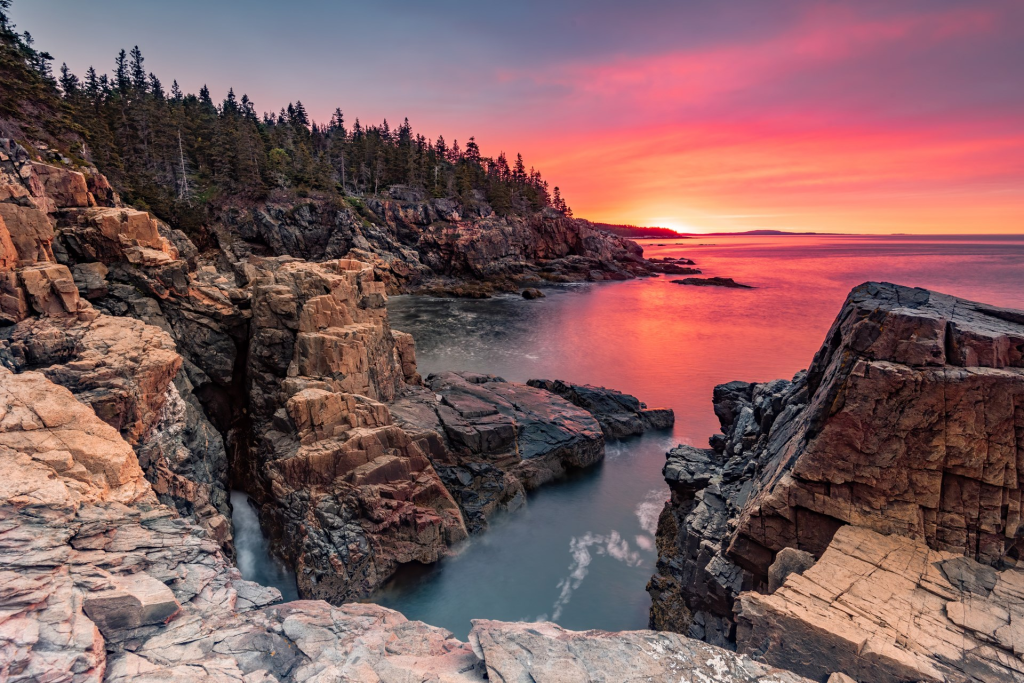Why Your Rain Gear Fails
By Cap Puckhaber, Reno, Nevada
I’ll never forget the storm that rolled in on us in the Desolation Wilderness. One minute it was sunny, the next the sky turned a bruised purple and the temperature dropped 20 degrees. My buddy, who was wearing a cheap rain jacket he’d never washed, was soaked through in ten minutes. He was miserable and shivering, and we had to cut our trip short. My Gore-Tex shell, which I treat like a prized possession, kept me bone dry. That day was a stark reminder that your clothing isn’t just about comfort, it’s about safety. What you wear and how you care for it can be the difference between a great story and a dangerous situation.
For years, I’ve been dialing in my hiking clothing system across the deserts of Utah, the granite peaks of the Sierra Nevada, and the damp forests of the Pacific Northwest. I’ve learned what works, what fails, and why the little details matter so much. It’s not about buying the most expensive gear, but about building a smart, adaptable system. It all starts with understanding the core principle of layering.
The Foundation of Trail Comfort: Your Layering System
You’ve probably heard about layering, but it’s more than just throwing on a few shirts. It’s a deliberate system designed to manage moisture and regulate your body temperature as your activity level and the weather change. Think of it as your body’s personal climate control. When you’re sweating on a steep ascent, you can shed layers. When you stop for a break and the wind picks up, you add them back on. This adaptability is everything. A proper system is built from three distinct parts working together.
Your base layer is what sits right against your skin. Its only job is to wick sweat away from your body to keep you dry. Next, your mid-layer provides insulation, trapping your body heat to keep you warm. Finally, your outer layer, or shell, protects you from the elements like wind and rain. Mastering this system means you’ll stay comfortable and safe in a huge range of conditions, without having to carry a massive wardrobe in your pack.
The All-Important Base Layer: Your Second Skin
Your shirt is the true start of your entire upper body system, and its material is the most important decision you’ll make. You need something that pulls moisture off your skin and dries in a flash. This is where you absolutely, positively must avoid cotton. I can’t stress this enough. Cotton is a terrible fabric for hiking because it absorbs moisture like a sponge and takes forever to dry, which can lead to chafing, cold spots, and even hypothermia in serious conditions. It’s a real safety hazard.
Instead, you should always choose between two main options for your hiking shirts. Merino wool is my personal favorite for multi-day trips because it’s incredibly breathable and naturally resists odor-causing bacteria. You can wear a merino shirt for days without it getting funky. Synthetic fabrics like polyester or nylon blends are another excellent choice. They are super durable, dry extremely fast, and are typically more affordable than wool. Both short-sleeve and long-sleeve versions have their place. Short sleeves are great for hot days, but I find myself wearing a long-sleeve sun hoodie more often for its built-in sun and bug protection for my arms and neck.
Your Go-To Insulation Layer
The next piece of the puzzle is your mid-layer, which is all about trapping heat. This is the layer you’ll take on and off the most throughout the day. A classic fleece jacket is a fantastic, breathable option. A lightweight fleece is perfect for taking the chill off during a cool morning start or an evening at camp. They’re workhorses, though they don’t offer much protection from the wind on their own.
For more serious warmth, especially when you need something that packs down small, you’ll want a puffy jacket. You have two choices here: down or synthetic. Down jackets, like the kind you see from brands like Arc’teryx or Patagonia, offer the best warmth for their weight and compress down to almost nothing. Their main weakness is that down loses its insulating properties when it gets wet. Synthetic insulation, on the other hand, continues to insulate even when damp and is generally more rugged. I usually carry a synthetic puffy for trips in wetter climates for that exact reason.
Choosing the Right Hiking Pants and Shorts
What you wear on your legs needs to offer protection, durability, and freedom of movement. Just like with shirts, steer clear of cotton jeans or sweatpants. You need materials that stretch and dry quickly. Hiking shorts are my pick for hot and dry summer hikes. They offer maximum ventilation and freedom. Look for a pair with a gusseted crotch for better mobility and zippered pockets to keep small items secure.
For most conditions, however, I prefer hiking pants. They provide far better protection from the sun, scrapes from rocks and branches, and annoying insects like ticks and mosquitoes. Modern hiking pants from brands like prAna or Outdoor Research are made from incredible stretchy nylon blends that feel like you’re wearing nothing at all. Convertible pants, which have zippers to turn them into shorts, are another popular option. I used to love them for their versatility on long thru-hikes, as they let you adapt to changing temperatures without packing both shorts and pants.
Don’t Overlook Your Head and Neck
Many hikers forget about protecting their head and neck, but these areas are incredibly exposed to the elements. A good hat is a non-negotiable piece of gear. On sunny days, a wide-brimmed hat provides the best protection for your face, ears, and neck. A simple baseball cap works well too, especially if you have a sun hoody. For cold weather or high-altitude hikes, a fleece or wool beanie is essential for preventing heat loss.
I also never go on a hike without a neck gaiter, often called a Buff. This simple tube of fabric is one of the most versatile items in my pack. I can wear it around my neck for warmth, pull it up over my face to block wind and dust, or soak it in water to cool me down on a hot day. It weighs practically nothing and has saved me from sunburn and windburn more times than I can count. It’s a small piece of gear that makes a huge difference.
Your Shell Jacket: The Ultimate Line of Defense
Your outer layer, or shell jacket, is your armor against the worst weather. This is the piece of gear that will keep you dry in a downpour and block gale-force winds on an exposed ridgeline. When you’re shopping for one, you’ll see the terms “water-resistant” and “waterproof.” A water-resistant jacket can handle a light drizzle for a short time, but it will eventually soak through. A truly waterproof jacket, often made with a membrane technology like Gore-Tex or eVent, is what you need for reliable storm protection. According to a 2024 report by Outside Magazine, modern waterproof-breathable fabrics have become significantly more effective at balancing weather protection with ventilation.
Breathability is just as important as waterproofing. As you hike, your body produces a lot of heat and sweat. A good shell jacket needs to let that water vapor escape so you don’t get clammy and wet from the inside out. Features like pit zips, which are zippers under the armpits, are great for dumping heat quickly without having to take your jacket off. An adjustable hood that cinches down tight and a hem that can be tightened are also critical for sealing out bad weather. This jacket is an investment, and it only works if you take care of it.
Keeping Your Waterproof Gear in Fighting Shape

I’ve seen too many people spend hundreds of dollars on a high-end waterproof jacket only to have it fail them because they never maintained it. Dirt, sweat, and body oils can clog the pores of the waterproof membrane, hurting its breathability and causing the outer fabric to absorb water. You might think your jacket is leaking, but often it just needs a good cleaning to restore its performance. Proper care is straightforward, but you have to do it right.
This process ensures your gear lasts for years and performs when you need it most. It’s not something you need to do after every single hike, but you should definitely wash your waterproof gear after extended trips or any time it looks visibly dirty or starts to absorb water instead of shedding it. The official GORE-TEX website provides similar guidance, emphasizing that a clean garment performs better. Taking thirty minutes to care for your jacket at home can save you from a world of misery on the trail.
The Right Way to Wash Your Gear
First things first, you need to use the right cleaner. Regular laundry detergents are a huge mistake. They contain fragrances, softeners, and other additives that can cling to the fabric, damage the waterproof membrane, and strip away its water-repellent coating. Instead, you need a specialized cleaner formulated for technical outerwear. I personally use and recommend Nikwax Tech Wash. It’s a gentle, soap-based cleaner that removes grime without harming the fabric’s technical properties.
Before you wash, make sure to zip up all the zippers, including the main zip, pockets, and pit zips. Fasten any loose flaps or straps as well. This prevents the jacket from getting snagged in the machine. Wash the garment in warm water, somewhere between 30°C and 40°C (that’s 86°F to 104°F). Hot water can damage the seam tape and coatings, so always stick to a warm, gentle cycle. It’s also a good idea to run an extra rinse cycle to ensure all the cleaner is washed out.
Drying and Reactivating Your DWR
After washing, it’s time to dry your gear, and this is a crucial step. Many people are afraid to put their expensive jacket in a dryer, but for most waterproof fabrics, the heat is actually beneficial. The warmth helps reactivate the Durable Water Repellent (or DWR) coating on the outside of the fabric. The DWR is what makes water bead up and roll off. When it’s working properly, the jacket sheds water beautifully.
Tumble dry your jacket on a low to medium heat setting for about 20 to 30 minutes, or until it’s fully dry. This heat is what revives that DWR finish. If you don’t have a dryer or prefer not to use one, you can hang it to air dry. Once it’s dry, you can still reactivate the DWR by tossing it in the dryer for 20 minutes on low heat or by going over it carefully with an iron on a warm, steam-free setting. Just be sure to place a towel between the iron and the jacket.
When and How to Re-Waterproof
Over time, that factory DWR coating will wear off from abrasion, dirt, and regular use. You’ll know it’s time to re-waterproof when water stops beading up and starts soaking into the outer fabric, a phenomenon known as “wetting out.” Even though the underlying membrane is still keeping you dry, a wetted-out jacket feels heavy, cold, and won’t breathe well at all. Luckily, restoring the DWR is easy.
After washing the jacket with a product like Nikwax Tech Wash, you can use a wash-in waterproofing treatment like Nikwax TX.Direct. You simply run the clean garment through another wash cycle with the waterproofing solution instead of a cleaner. The process saturates the fabric and restores its water repellency. Afterward, you’ll dry it just as described before, using heat to help the new DWR treatment bond to the fabric. Doing this once a season or as needed will dramatically extend the life and performance of your gear.
The Unsung Heroes: Socks and Footwear
We’ve covered almost everything, but we can’t forget what is arguably the most important part of your hiking comfort, your socks. A bad pair of socks can lead to blisters and hot spots faster than anything else, completely ruining a trip. Just like with your other layers, you must avoid cotton socks. They hold sweat against your skin, which is the primary cause of blisters. You want socks made from merino wool or a synthetic blend.
According to a survey by the American Podiatric Medical Association
, 77% of adults have experienced foot pain, and much of that can be prevented with proper footwear and socks. Look for socks with seamless toes to reduce rubbing and some cushioning underfoot for comfort. I always bring at least one extra pair of socks on every hike. Swapping to a dry, clean pair midday can feel absolutely incredible. And always keep a dedicated pair of socks just for sleeping in. Your socks work directly with your footwear, whether you choose lightweight trail runners or supportive hiking boots from a brand like Merrell or Salomon. The combination of a good sock and a well-fitting shoe is the foundation for happy feet on the trail.
The Biggest Mistake Hikers Make With Their Gear
The single biggest mistake I see hikers make isn’t buying the wrong brand or spending too little. It’s neglect. They wear cotton on the trail, or they invest in a great rain jacket and then toss it in the closet muddy and never wash it. Your gear is a system of tools, and like any tool, it requires maintenance to function properly. You wouldn’t expect a knife to stay sharp forever without sharpening it, and you can’t expect a technical piece of clothing to perform if you don’t clean and care for it.
Set aside some time after your big trips to properly clean, dry, and store your apparel. This not only protects your investment but also ensures your gear will be ready to protect you on your next adventure. Taking care of your equipment is a fundamental part of being a responsible and self-sufficient outdoorsperson. It’s a habit that pays off with years of reliable performance. Your future self, warm and dry in a sudden storm, will thank you for it.
This complete system, from your socks to your shell and the knowledge of how to care for it all, is what gives you the confidence to head out into the wild. You can handle changing weather and challenging conditions because you’re prepared.
Ready to build out the rest of your kit? Take a look at my complete gear checklist on TheHikingAdventures.com to make sure you have all the essentials before you hit the trail.
About the author
Cap Puckhaber is a marketing strategist, finance writer, and outdoor enthusiast. He writes across CapPuckhaber.com, TheHikingAdventures.com, SimpleFinanceBlog.com, and BlackDiamondMarketingSolutions.com. Follow him for honest, real-world advice backed by 20+ years of experience.
Hiking and Backpacking Clothing Guide
A Hiker’s Guide to Boots and Foot Pain
6 Essential Knots Every Hiker Must Know

Join our Mailing List
Sign up with us now and be the first one to know about our exclusive offers and product updates.
By submitting your information, you`re giving us permission to email you. You may unsubscribe at any time.
Follow Cap Puckhaber on Social Media


About the Author: Cap Puckhaber
Backpacker, Marketer, Investor, Blogger, Husband, Dog-Dad, Golfer, Snowboarder
Cap Puckhaber is a marketing strategist, finance writer, and outdoor enthusiast from Reno, Nevada. He writes across CapPuckhaber.com, TheHikingAdventures.com, SimpleFinanceBlog.com, and BlackDiamondMarketingSolutions.com.
Follow him for honest, real-world advice backed by 20+ years of experience.





